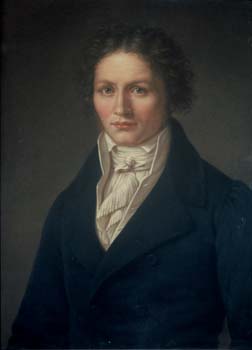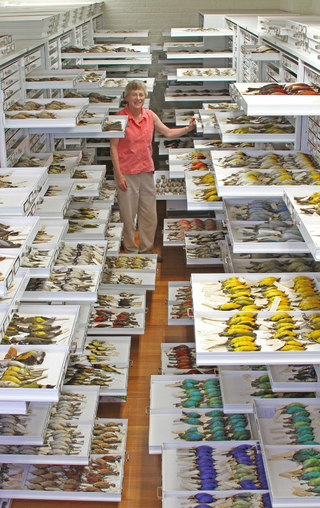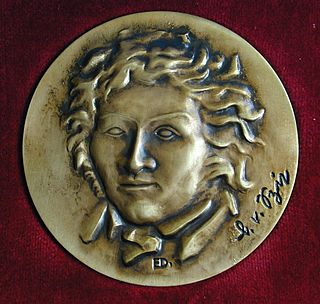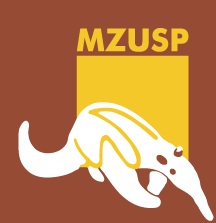
Entomology is the scientific study of insects, a branch of zoology. In the past the term insect was less specific, and historically the definition of entomology would also include the study of animals in other arthropod groups, such as arachnids, myriapods, and crustaceans. This wider meaning may still be encountered in informal use.

Johann Baptist Ritter von Spix was a German biologist. From his expedition to Brazil, he brought to Germany a large variety of specimens of plants, insects, mammals, birds, amphibians and fish. They constitute an important basis for today's National Zoological Collection in Munich. Numerous examples of his ethnographic collections, such as dance masks and the like, are now part of the collection of the Museum of Ethnography in Munich.

Carl Eduard Hellmayr was an Austrian ornithologist.
Heinrich Balss was a German zoologist, specialising in Crustacea, especially decapods. He was chief conservator at the Zoologische Staatssammlung at the University of Munich, and wrote the sections on decapods and stomatopods in Heinrich Georg Bronn's seminal work Klassen und Ordnungen des Tierreichs.

The Bavarian State Library in Munich is the central "Landesbibliothek", i. e. the state library of the Free State of Bavaria, the biggest universal and research library in Germany and one of Europe's most important universal libraries. With its collections currently comprising around 10.89 million books, it ranks among the leading research libraries worldwide. The Bayerische Staatsbibliothek furthermore is Europe's second-largest journals library. Furthermore, its historical holdings encompass one of the most important manuscript collections of the world, the largest collection of incunabula worldwide, as well as numerous further important special collections. Its collection of historical prints before 1850 totals almost one million units.

Ernst Josef Fittkau was a German entomologist and herpetologist.

The Museum of Comparative Zoology is a zoology museum located on the grounds of Harvard University in Cambridge, Massachusetts. It is one of three natural-history research museums at Harvard, whose public face is the Harvard Museum of Natural History. Harvard MCZ's collections consist of some 21 million specimens, of which several thousand are on rotating display at the public museum. In July 2021, Gonzalo Giribet, Alexander Agassiz Professor of Zoology at Harvard and Curator of Invertebrate Zoology, was announced as the new director of the museum.

The Journal of Natural History is a scientific journal published by Taylor & Francis focusing on entomology and zoology. The journal was established in 1841 under the name Annals and Magazine of Natural History and obtained its current title in 1967. The journal was formed by the merger of Loudon and Charlesworth's Magazine of Natural History (1828–1840) and the Annals of Natural History.

The State Museum of Zoology in Dresden is a natural history museum that houses 10,000–50,000 specimens, including skeletons and large insect collections. Many are types. The collection suffered war damage and whilst catalogued the database is not computerized. Loans are possible and material can be studied in the collection. The address is Augustusstrasse 2, D-01067 Dresden, Germany. The museum's collections contain more than 6 million items from all over the world.

The Bavarian State Collection of Zoology or ZSM is a major German research institution for zoological systematics in Munich. It has over 20 million zoological specimens. It is one of the largest natural history collections in the world. The sections are Entomology, Invertebrates and Vertebrates. The history of the museum is outlined on the museum's home page together with a biography of Johann Baptist von Spix the first curator of zoology.

Georg Karl Maria von Seidlitz was a German doctor and entomologist. He was a zoology teacher in Dorpat (1868–77), then in Königsberg, (1877–88), where he became a fishery expert. He later specialised in Coleoptera, describing many new species and he wrote Fauna Baltica. Die Käfer (Coleoptera) der Ostseeprovinzen Russlands. Dorpat, 1875. His general beetle collection is conserved in the Zoologische Staatssammlung München, his Baltic Coleoptera are in the zoology museum in Kaliningrad.
Ernst Pfeiffer was a German entomologist who specialised in Lepidoptera He was a publisher and bookseller. Pfeiffer made numerous collecting trips to Hungary, Dalmatia, Bulgaria, and Persia. He published many scientific papers on Rhopalocera in Mitteilungen der Münchner Entomologischen Gesellschaft and with Osthelder edited Lepidopteren-Fauna von Marasch in türkisch Nordsyrien in the same journal. His collection of Palearctic and Nearctic butterflies is in the Munich zoological museum Zoologische Staatssammlung München.

Muzeum i Instytut Zoologii PAN is a zoological museum in Warsaw, Poland. It was established in 1819. It is an institute of the Polish Academy of Sciences. It publishes the journal Acta Chiropterologica, a scientific journal on bats.

The Zoologische Staatssammlung München awards the Ritter-von-Spix-Medal to distinguished donors and benefactors of outstanding zoological collections. The German research institution has built up one of the largest natural history collections in the world with over 20 million zoological specimens.

The Museum of Zoology of the University of São Paulo is a public natural history museum located in the historic Ipiranga district of São Paulo, Brazil. The MZUSP is an educational and research institution that is part of the University of São Paulo. The museum began at the end of the 19th century as part of the Museu Paulista; in 1941, it moved into a dedicated building. In 1969 the museum became a part of the University of São Paulo, receiving its current name.
Scopula pudicaria is a moth in the family Geometridae. It is found from north-eastern China to south-eastern Russia, Korea and Japan.
Martin Baehr was a German entomologist who mostly worked on ground beetles (Carabidae), but also spiders, grasshoppers and other taxa. He described and named more than 2.000 species, mostly from Southeast Asia and Australia. He studied biology at the university of Tübingen. Initially, his doctoral thesis was supervised by Willi Hennig, who, however, died before Baehr´s graduation. Baehr was curator at the Zoologische Staatssammlung München, at first in charge of Heteroptera and Orthoptera, later of Coleoptera. For many years he worked as the managing editor of the zoological journal Spixiana. One of his most comprehensive taxonomic revisions treated the subfamily Pseudomorphinae. In addition to scholarly works, Baehr has written a number of popular books including Welcher Käfer ist das? published by Stuttgart-based publishing company Kosmos.

Ludwig Heinrich Philipp Döderlein was a German zoologist. He specialized in echinoderms, particularly sea stars, sea urchins, and crinoids. He was one of the first European zoologists to have the opportunity to do research work in Japan from 1879 to 1881. Today, he is considered one of the most important pioneers of marine biological research in Japan.
Otto Schindler (1906–1959) was a German zoologist who specialised in ichthyology.














